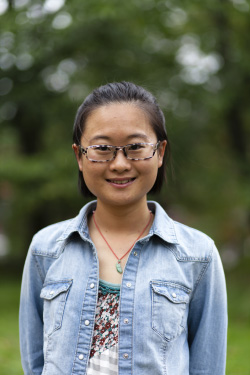Xiaohui applies her skills and knowledge of analysis and visualisation as an urban planner and designer
Xiaohui Wang is an urban planner and designer at Zhejiang Urban & Rural Planning Design Institute, and an alumnus from the master’s programme in Sustainable Urban Planning and Design at KTH.

What made you decide to start studying at KTH?
There are a number of reasons to why I decided to study at KTH. Firstly, I have always been interested in the social democracy, gender equality and sustainable development in Sweden. Thus, studying at KTH gave me an opportunity to experience all these issues in my daily life in Stockholm in person. Secondly, studying at KTH is very flexible and students can decide their own study plan according to interest, for example, through the course selection. Finally, for master education, KTH and Sweden offers more scholarship opportunities than most other. Since I got a Swedish Instititute (SI) Study Scholarship for studying at KTH, I did not have a heavy financial burden to make this choice.
What does your current job involve?
I am now an urban planner and designer in Zhejiang Urban & Rural Planning Design Institute in Hangzhou, China. My job contains projects of master planning, rural planning and design, urban design and urbanism research. Besides this, my work also involves a lot of analysis, illustration and visualisation.
How do you use the knowledge and skills you gained during your degree?
The knowledge about sustainability and new movements and theories of urbanism in Europe are really helpful for my current job, especially for new ideas, brainstorming and case studies. I can apply placemaking, urban farming, urban gardening and green energy in the conceptual stage when brainstorming. Visualisation and illustration skills lets me clearly present my ideas vividly.
What do you see as the greatest aspects of your programme?
My master’s programme Sustainable Urban Planning and Design contained diverse topics of sustainable urbanism, planning and design from different perspectives of architecture, urban planning, landscape, public administration, transportation, policy, urban economics and so on. Due to its flexible course selection system, one can choose interesting courses in KTH or even outside KTH according to one’s interest. Besides, group work is a common way of assignment that students need to get used to. It is a way to train teamwork, communication ability and share knowledge.
What kind of career opportunities are available in your field?
One can find professional career oppurtunities in government sectors, urban planning institutes, architecture companies, urban planning companies, real estate companies, NGOs. If one is interested in academic research, he/she can pursue PhD studies or find a position in a research institute.
Five things that you would like to give as advice to students?
- Explore Stockholm. Stockholm is a green, sustainable and lively city. It has many charming cafés, beautiful parks, interesting pubs, wonderful exhibitions and diverse festivals. You can enjoy events or create your own.
- Exercise more. The whole of Stockholm is a good and beautiful place for running and other types of exercise. There are diverse running festivals or events through the year.
- Do an exchange study/visit. KTH offers numerous opportunities for exchange studies abroad and visits internationally. Keep an eye out for such information and do not hesitate to apply.
- Join more activities of THS (the student union), your local union chapter and KTH. Actually, there are many activities held by the student union and different department and associations at KTH.
- Make your own interesting project. KTH offers diverse grant applications. Find your own interesting topic and start to work on it!
